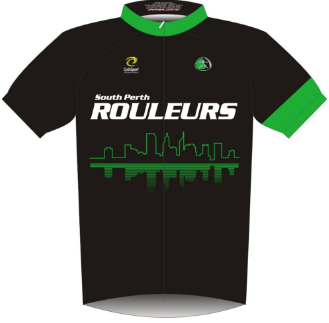SPR’s training rides set us apart as a Cycling Club; we are one of the few clubs in Australia, not affiliated with a bike shop, facilitating a broad range of opportunities for people to cycle in a group every day. Since its inception in 2009, a key feature of the feedback the Club receives is the need to improve the way our group rides are led. With more consistent, trained and visible ride leaders, the result will be safer, more enjoyable ride experiences for all.
To this end, the Club has developed a ride leader development program, with the objectives of:
- developing SPR ride leaders’ knowledge and skills of both ride leadership and core cycling practice
- building the confidence of ride leaders to ensure consistency and enhanced decision making during group rides
- growing the pool of capable, confident ride leaders
We are now seeking Expressions of Interest from SPR members who would like to be part of our first public Ride Leader Development Program. The Program consists of three separate but related components:
of Interest from SPR members who would like to be part of our first public Ride Leader Development Program. The Program consists of three separate but related components:
- Theory: covers the core knowledge and skills required to be an effective ride leader for group rides across the Main, Transition and Development rides conducted by SPR (+/- 2hrs personal time)
- Skills Sessions: out on the bike, learning all about what it takes to be a good ride leader as well as having the opportunity to practice your skills and ideas in a “safe” environment. (3 x 2.5 hours sessions)
- Ride Leader Observations: This will involve you being the ride leader for up to three (3) separate SPR training rides with an observer to determine how you go about deploying your skills and knowledge in the “real world” environment. (2 – 3 ‘normal’ training rides, weekdays or weekends as required)
As a participant, you will:
- learn new skills and knowledge about cycling as well as ride leadership,
- be part of the “qualified” ride leader team out on the road,
 receive a custom SPR Ride Leader jersey to be worn whenever you are leading a SPR ride, and
receive a custom SPR Ride Leader jersey to be worn whenever you are leading a SPR ride, and- have access to private discussion groups relating to rides and ride leadership; ongoing coaching and skills development; ride-leader only events.
In return, once you have successfully completed the Program, we will expect your commitment to the following:
- Lead a minimum of 2 rides* per month throughout the year
- Be a role model for ride behaviour on ALL rides you participate in, whether you are leading or not
- Assist in the recruitment and mentorship of future ride leaders
- Assist in training/observing people for their readiness to take on the role of Ride Leader.
*All prospective ride leaders should note that, from time to time, they will be called on to lead rides of a lower skill &/or fitness level than their own. This means putting the interests of the Club and other riders before their own.
At this stage, we are seeking to secure 10 -12 participants from across the spectrum of SPR riders. We are not just looking for highly experienced cyclists that only ride with the Fast/Main 1 groups. We need ride leaders for all levels of rides. While the ability to ride at or above the capability level of the group you are leading is important, just as critical is the constructive attitude and sound communication skills that are brought to the role. Empathy, care and the ability to encourage others is essential to the success of every ride leader.
In the event we are over-subscribed, the T&D sub-committee will use the quality & content of the EOI’s as well as the need to balance the mix of ride leaders to select the required number of participants. Anyone who is not selected shouldn’t be discouraged; it’s a numbers thing (us) rather than a capability thing (you). More Programs will be conducted later in 2017.
As part of your EOI, we would like you to outline:
- what you hope to get out of being a SPR ride leader
- why you feel you will be a good contributor to ride leader team
- your statement of commitment to the role of ride leader in terms of time to complete the Program and to lead the requisite number of rides per month
We anticipate kicking the Program off the week commencing 23 January ‘17 and completing it by the end of March ‘17.
If interested, please submit your EOI to development@southperthrouleurs.com.au before 13 January 2017. If you have any questions about the Program before submitting your EOI, please send them through to development@southperthrouleurs.com.au and we will get back to you ASAP.
SPR Training and Development Sub-Committee
 All members have access to use the van for the purposes of attending a cycling related event (races or otherwise). If this is something that you would like to do, take a look at the Van Use Guidelines that the Committee have developed. They will give you all the information you need on how to go about becoming an authorised member driver and what’s involved.
All members have access to use the van for the purposes of attending a cycling related event (races or otherwise). If this is something that you would like to do, take a look at the Van Use Guidelines that the Committee have developed. They will give you all the information you need on how to go about becoming an authorised member driver and what’s involved.



 Watch Video
Watch Video Watch Video
Watch Video







